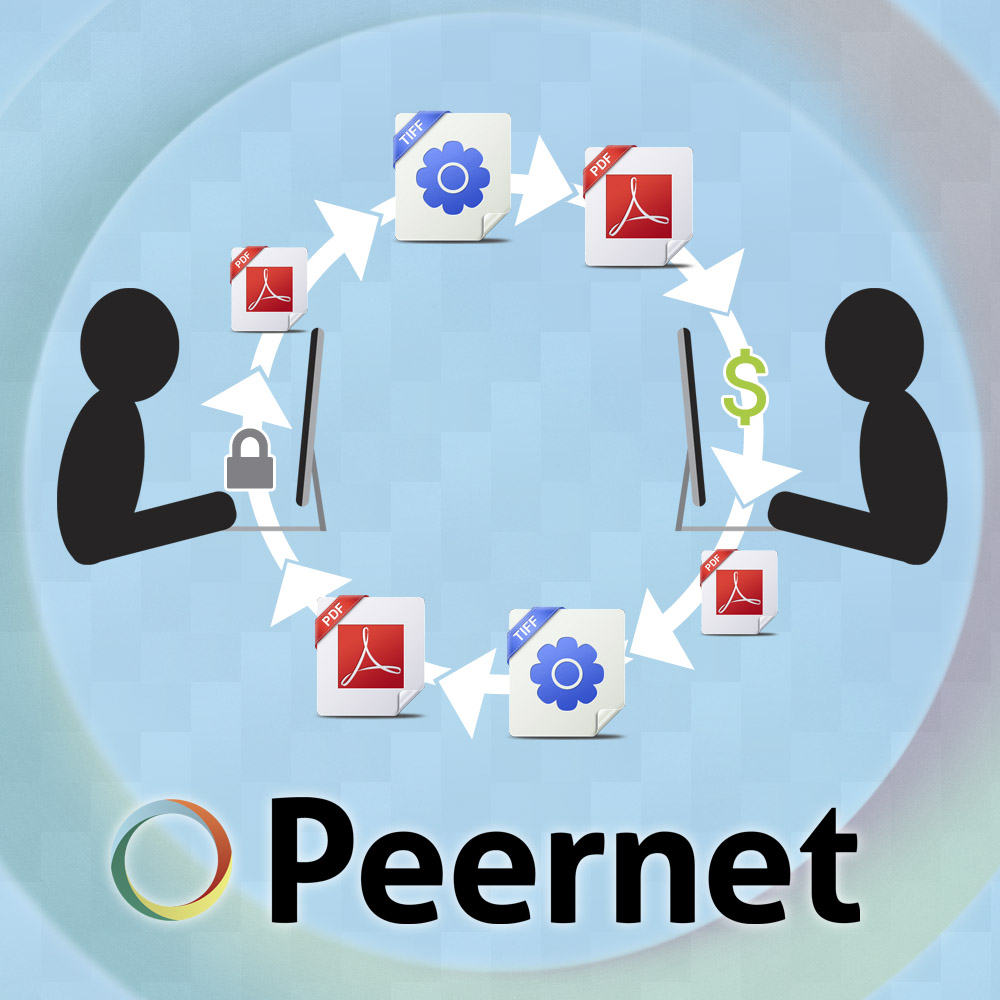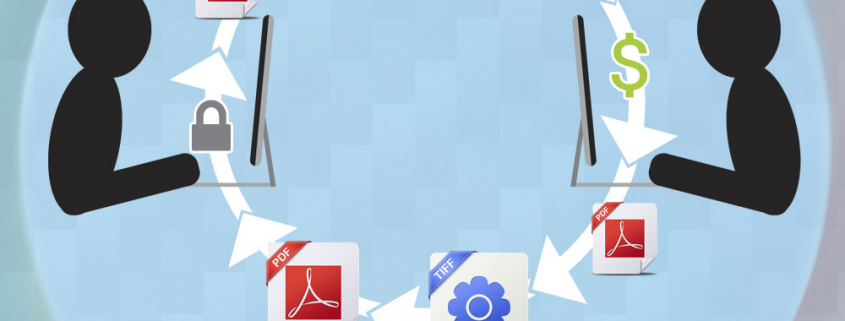The Best Formats for Sharing Documents in Business

Sharing digital documents between various users at the office is more common than ever before. Many modern businesses operate outside of the traditional desk-based workflow — with BYOD (bring your own device) policies becoming more and more commonplace.
The issue that this can pose for some companies is that once you have employees working on such a variety of operating systems, devices and the like, the formatting of document can become an issue if they are inconsistent from one worker’s computer/device to the next, or worse, when sent to a client.
The Document Formatting Problem
Let’s take a look at one of the most common programs used daily in the world of business: Microsoft Word. While its wide use makes it a good format to share word processed documents, it also comes with its own set of issues when sharing documents with others.
In simple terms, it’s quite likely that the document will look very different on the recipient’s computer or device than it does on the sender’s computer.
This can be problematic for a number of reasons.
- If you’ve broken a document down into sections, they might seem not to make sense when viewed on the recipient’s system.
- If you have put page breaks in specific places based on the layout of your document, they might seem strangely placed to the viewer of the document.
So why does this happen?
If the sender’s computer has different fonts installed than the recipient’s computer, the recipient’s computer may try to substitute in the closest match. Since individual characters can be different sizes from one font to the next, some lines of text may need to be broken up earlier; or, the substituted font may be able to fit more characters into a given line.
- One user’s margins or printable area may be set differently than the other users.
- “Style” settings from one user’s version of Word to the next can make alignment and headings different.
- Differences in screen resolution can make document format wildly different from one user’s computer to the next.
All of these issues can play havoc with the formatting of your document. And the problem can be compounded when there is more than one issue at play.
Because of these factors, sharing Microsoft Word documents is really not an ideal or professional way to produce reports, bills or other communications for clients, and is not even a great practice to use internally at your office.
The same issues that can cause documents to appear differently on one computer or another is not restricted to the Word, .doc, or .docx file format. Some of these issues can also affect files commonly produced by software such as Excel (.xlsx), Powerpoint (.ppt) and a variety of other file types that are shared around the office.
How to make sure that document format stays the same?
Thankfully, there is a fairly simple way to address this issue. By using the right document formats you can ensure that the viewer of the document is able to see the file exactly as you had laid it out.
There are two main file formats used in the business world for the purposes of ensuring that your document’s formatting remains the same:
- Portable Document Format – PDF (Raster style)
- Tagged Image File Format – TIFF
Both of these two file formats have their advantages and drawbacks. Let’s take a look at the benefits of sharing files in each of these formats.
PDF: The Benefits of Sharing files in PDF format
As its formal name of portable document format suggests, the PDF format was designed and has evolved to enable the easy sharing of documents between one user and the next. PDF was developed with portability in mind, and a big part of that is ensuring that document formatting maintains consistency from one platform to the next. Of course, with the proliferation of mobile devices, tablets and the like, one could argue that the format has become even more useful, with the greater variety of device sizes and operating systems used today. One of the strengths of PDF as a file format is that it is extremely versatile.
PDF files can be broken down into two main types:
- Raster PDF
- Vector PDF
For the purposes of maintaining absolutely consistent document formatting, raster PDF is the way to go. This is the same format that is generally used when scanning a physical document into your computer. A raster PDF essentially functions in the same manner as an image on your computer. That means that when you try to highlight some text, your cursor will actually grab the whole page at once, as all the elements essentially function as one image.
A vector PDF, on the other hand, renders the individual lines and text on page, making use of embedded fonts. This is advantageous for some uses, such as copying and pasting text, keeping file sizes lower, and maintaining document quality upon zooming; however, you may run into the same issue that you may run into a Word document.
Some of the other main benefits of the PDF format include: wide scale adoption throughout the business world; a wide range of options to customize the quality and file size of your outputted digital documents; and password-protection functionality on individual files.
How to Convert Files to PDF?
Converting files from other Windows file formats to PDF is actually quite easy to do. There are a number of software solutions offered by Peernet that are purpose-built to ensure easy conversion to PDF, giving you consistent layout on your documents — no matter what system they’re eventually viewed on.
For quick and easy raster PDF creation: PDF Image Printer. This program allows you to convert Windows documents, such as Word, Excel, Powerpoint, text, or any other type of printable Windows file, into PDF format. As mentioned, raster PDF is the ideal format for maintaining document layout from one system to the next.
TIFF: The Benefits of Sharing Files in TIFF format
The Tagged Image File Format (TIFF, or sometimes denoted as TIF), began its development as a format to be ideally suited to the scanning of physical documents. In the 1980s when many companies first started to adapt computers into their workflow, there was a need for a format that was built to handle scanned documents. TIFF was built for that purpose. Its lineage makes it a perfect format that is both shareable, and sure to maintain formatting.
Like a raster PDF, a TIFF is an image-based format. That means that the text and fonts are not rendered individually, instead, the entire document or ‘page’ is rendered as a single image.
Some of the other main benefits of the TIFF file format are: high-quality files with the ability to very accurately replicate an original document; a range of compression options depending on file size concerns; good security features; viewable on almost all modern devices.
How to Convert Files to TIFF?
For easy TIFF Creation: TIFF Image Printer is built specifically to allow for fast and easy conversion of any Windows document that you can open and print, into the TIFF File Format. While it’s easy to use, the software also gives you a great deal of control over your output settings, image adjustments and preferences, should you need it.
Raster Image Printer combines the functionality of PDF Image Printer and TIFF Image Printer into one package, and adds in the ability to easily convert printable files to JPEG format as well.
ConvertMyFiles.com, mentioned above, also allows users to convert files to TIFF.
Convert Documents to PDF or TIFF to Maintain Formatting
PEERNET has a variety of options available to set you or your organization up with a method of sharing files and documents in the best formats available. Our range of software products extends beyond what we’ve mentioned in this article, even to enterprise-level batch file conversion software like our Document Conversion Service. The right product for you or your company will depend on a number of factors related to your organization, including the frequency of your file conversion demands. To get a better sense of which product might be right for you, please watch the video below.
If you still have any questions remaining, please do not hesitate to get in touch with us here at PEERNET and we will be happy to point you in the right direction.



